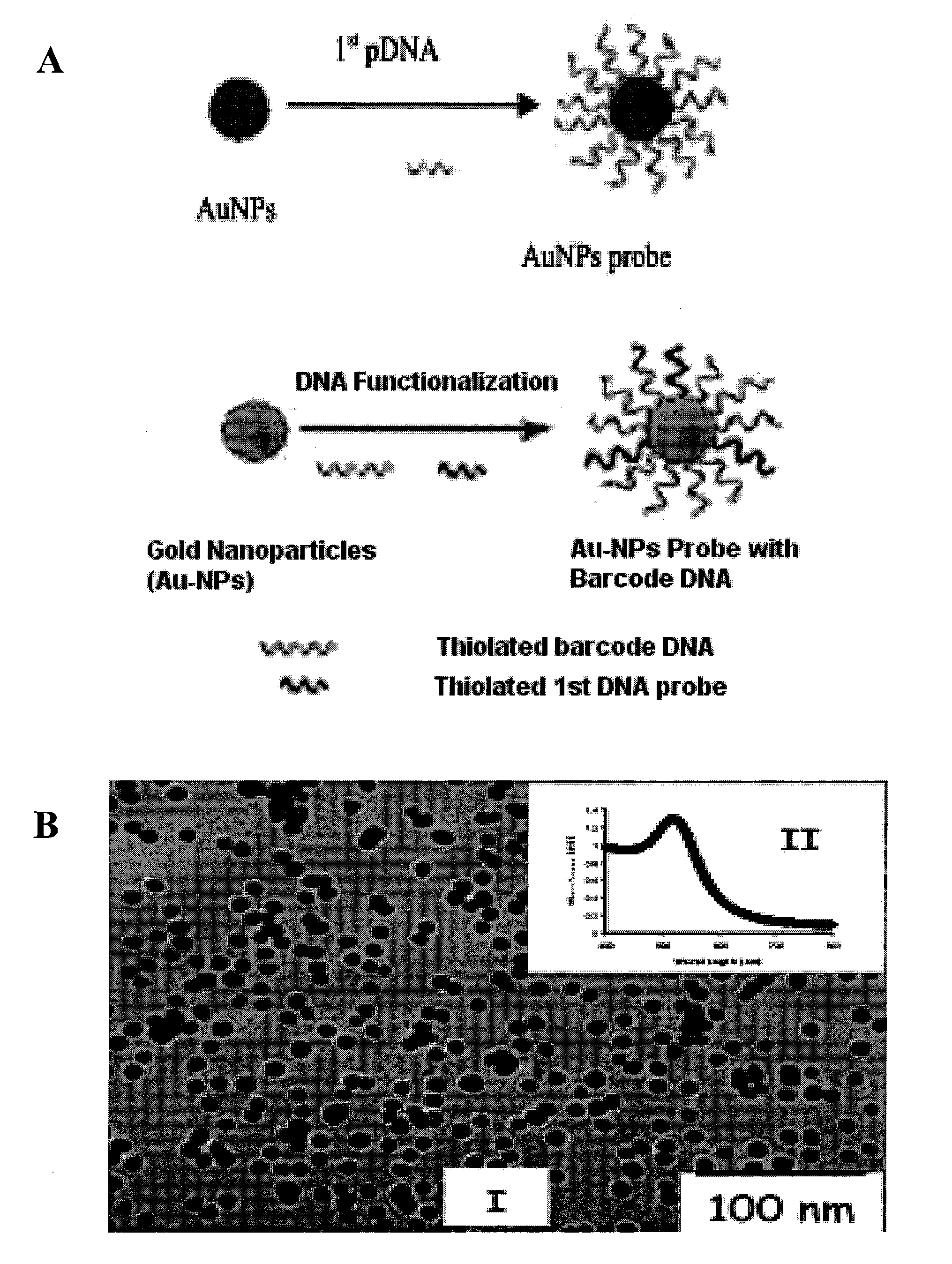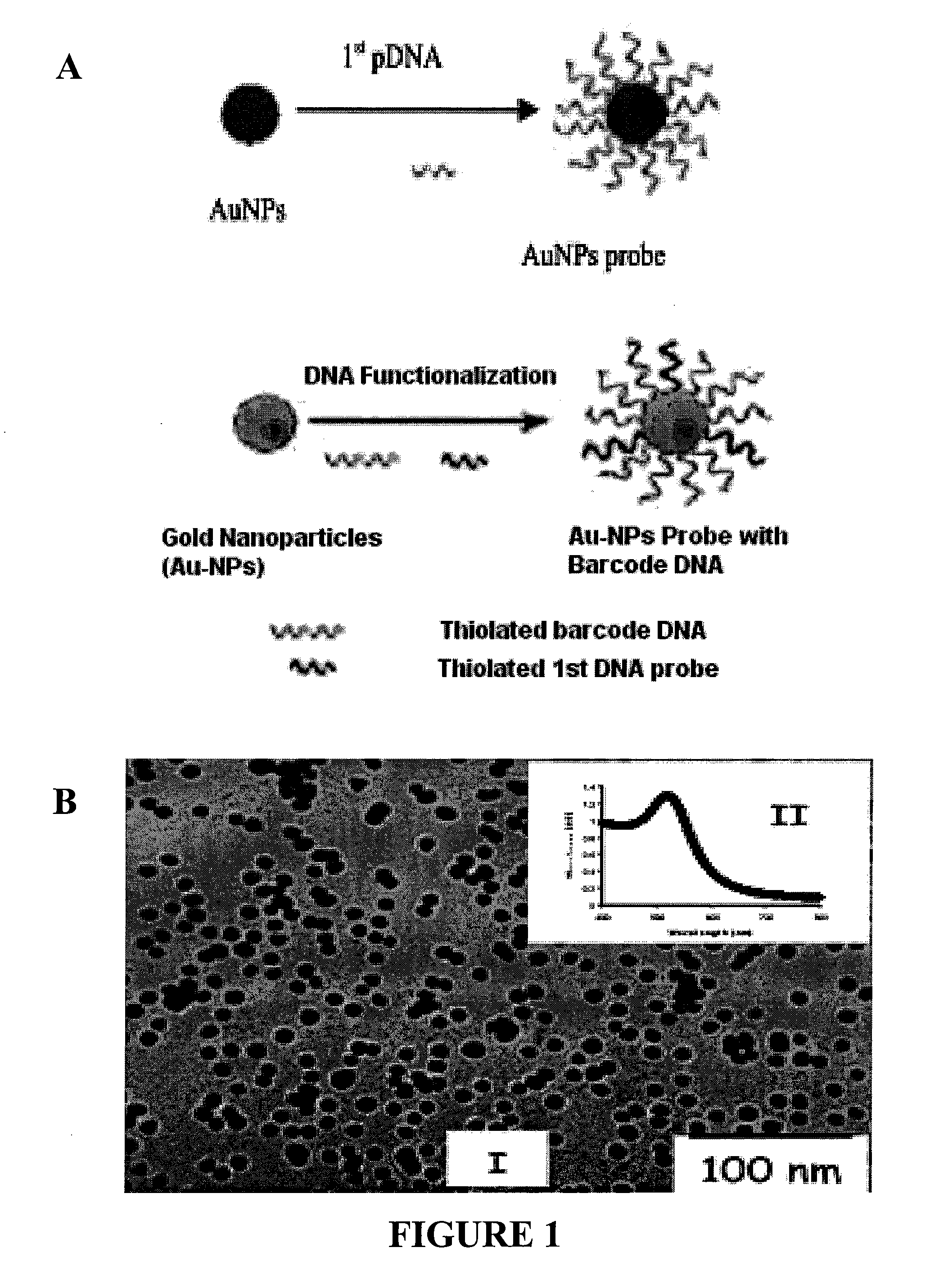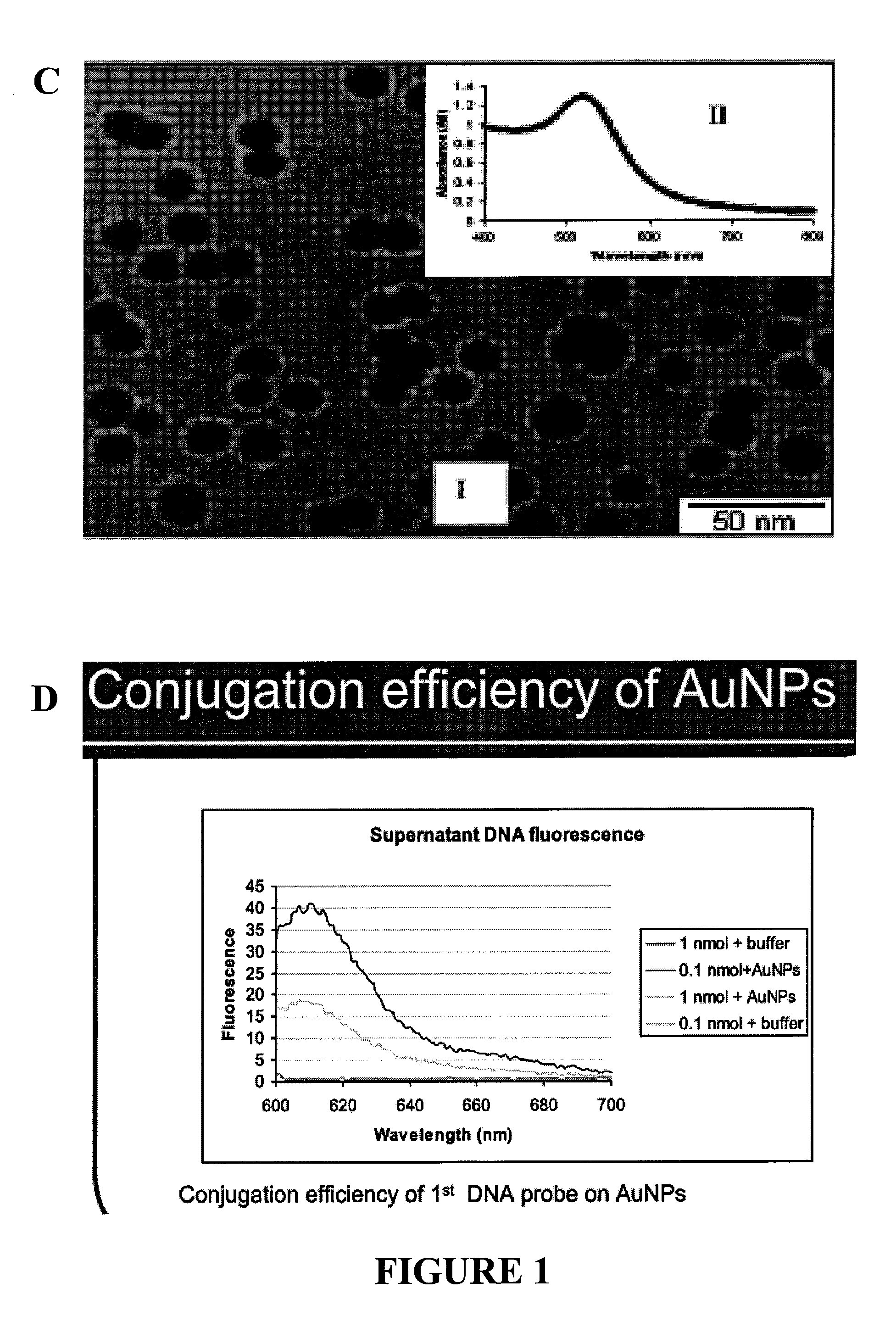Nanoparticle tracer-based electrochemical DNA sensor for detection of pathogens-amplification by a universal nano-tracer (AUNT)
a nano-tracer and nano-particle technology, applied in the field of antibody-based biosensor probes, can solve the problems of salmonella /i>a major threat to food safety and public health, detection systems, and salmonella /i>can spread, and achieve the effects of sensitive detection, valid identification and rapid detection
- Summary
- Abstract
- Description
- Claims
- Application Information
AI Technical Summary
Benefits of technology
Problems solved by technology
Method used
Image
Examples
examples
[0315]These Examples describes the synthesis and characterization of nanoparticles and DNA used in the present inventions. The nanoparticles were synthesized and characterized based on their magnetic properties (for MNPs), nanoscale dimensions, and optical properties (for AuNPs and NPTs) (See, FIGS. 1 and 2). Functionalization of AuNPs and MNPs was successfully carried out and analyzed (See, FIGS. 1 and 2). This assay was initially developed using fluorescent detection of released silent (bDNA) (Zhang, et al., Biosens Bioelectron. 2009 Jan. 1; 24(5):1377-81. Epub 2008 Aug. 19, herein incorporated by reference) followed by the use of metal tracer particles as described below and in the following Examples.
[0316]The following examples describe biosensor applications of this diagnostic system tested by evaluating the detection of the lei gene from Salmonella Enteritidis in homogenous DNA samples consisting of target lei gene. The inventors initially tested AUNT using fluorescent molecul...
example i
[0317]This Example describes the synthesis of AuNPs and MNPs, amine-functionalized AuNPs, amine-functionalized MNPs, metal tracer molecules and DNA targets and probes of the present inventions. In particular, descriptions include the synthesis of elements for use as AUNT detection using fluorescent molecules and nanoparticle tracers of the present inventions. Specifically, Example describes the synthesis AuNPs and MNPs, amine-functionalized AuNPs, amine-functionalized MNPs, and DNA targets and probes of the present inventions for use with embodiments of biosensors of the present inventions.
[0318]Synthesis (fabrication) and characterization of gold nanoparticles (AuNPs): Gold nanoparticles were synthesized by a chemical reduction method (Hill, et al., 2006. Nat. Protoc. 1:324-336, herein incorporated by reference in entirety). Hydrogen tetrochloroaurate (III) trihydrate and sodium citrate dehydrate were used for the synthesis of gold nanoparticles. 1,4-Dithio-DL-threitol (DTT) was us...
example ii
[0335]This example demonstrates fluorescent labeling of silent biobarcode DNA for determining efficency of labeling and for detection of pathogens.
[0336]Hydrogen tetrochloroaurate (III) trihydrate and sodium citrate dehydrate were used for the synthesis of gold nanoparticles. 1,4Dithio-DL-threitol (DTT) was used for the cleavage of oxidized thiolated oligonucleotides and release of thiolated barcode DNA from Au-NPs surface. Amine-coated MNPs were used for separation and preconcentration. Reagents were purchased from Sigma (St. Louis, Mo., USA). Nap-5 column was purchased from GE Healthcare (Piscataway, N.J., USA), which was used to purify the DNA product from DTT solution. Sulfosuccinimidyl 4-Nmaleimidomethyl cyclohexane-1-carboxylate (sulfo-SMCC; Pierce, Milwaukee, Wis., USA) was used as a cross-linker between thiolated DNA probe and amine-coated MNPs. Sulfo-NHS acetate (Pierce, Milwaukee, Wis., USA) was used to block unreacted sulfo-SMCC. Solutions were prepared in distilled water...
PUM
| Property | Measurement | Unit |
|---|---|---|
| diameter | aaaaa | aaaaa |
| diameter | aaaaa | aaaaa |
| diameter | aaaaa | aaaaa |
Abstract
Description
Claims
Application Information
 Login to View More
Login to View More - R&D
- Intellectual Property
- Life Sciences
- Materials
- Tech Scout
- Unparalleled Data Quality
- Higher Quality Content
- 60% Fewer Hallucinations
Browse by: Latest US Patents, China's latest patents, Technical Efficacy Thesaurus, Application Domain, Technology Topic, Popular Technical Reports.
© 2025 PatSnap. All rights reserved.Legal|Privacy policy|Modern Slavery Act Transparency Statement|Sitemap|About US| Contact US: help@patsnap.com



